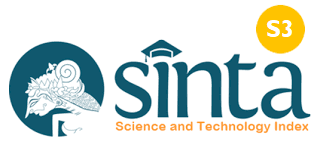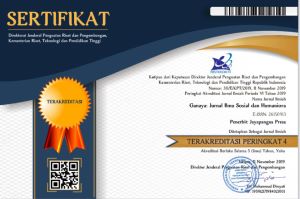Peningkatan Keterampilan Menulis Puisi Dengan Penerapan Metode Hypnoteaching Pada Siswa Kelas X Di SMAN 1 Bantaeng
DOI:
https://doi.org/10.37329/cetta.v6i3.2567Keywords:
Poetry Writing Skills, Hypnoteaching MethodAbstract
The purpose of this study was to find out how much the students' poetry writing skills increased through the application of the hypnoteaching method in class X MIPA 4 SMAN 1 Bantaeng in learning Indonesian. This type of research is classroom action research (CAR) with quantitative and qualitative analysis techniques using the hypnoteaching method. Based on the results of pre-cycle, cycle I, and cycle II data analysis, it was found that the average class scores obtained by students in learning to write poetry increased. In the pre-cycle, the average class value achieved was 62. In the first cycle, there was an increase in the average value from pre-cycle 11 with the average class value reaching 73. The increase in the average class value also occurred in cycle II, namely the average the class value achieved was 80.25 or an increase from cycle I of 7.25, while an increase from pre-cycle to stage II of cycle was 18.25. Based on the results of this research, it is suggested to Indonesian language and literature teachers to be able to use the hypnoteaching method in learning to write poetry.
References
Akidah, I. (2018). Peningkatan Pembelajaran Menulis Karangan Persuasi Dengan Menerapkan Model Pembelajaran Berbasis Contoh. Tamaddun, 17(1), 22–27.
Arta Wiguna, I. B. A. (2020). Implementasi Metode Hynoteaching Dalam Meningkatkan Mutu Aktivitas Belajar Siswa Di SMAN 7 Denpasar. Jurnal Penjaminan Mutu, 6(1)
Haoliya, H., Rabiah, S., & Mazhud, N. (2022). Meningkatkan Keterampilan Menulis Puisi Melalui Metode Quantum Writing Pada Siswa Kelas X. Jurnal Pendidikan, 1(2), 601–613.
Hatmo, K. T. (2021). Keterampilan Menulis Puisi (1st ed.). Klaten: Penerbit Lakeisha.
Juaidah Agustina, T. M. (2018). Metode Hypnoteaching Sebagai Upaya Meningkatkan Keterampilan Menulis Narasi Mahasiswa. 16(3), 354–365.
Lafamane, F. (2020). Karya (Puisi, Prosa, Drama). OSF Preprints, 1–18.
Nurhidayanti, T. (2021). Konsep Pembelajaran dan Penelitian Linguistik. Malang: Literasi Nusantara.
Nursafitri, A., Rabiah, S., & Muin, N. (2022). Penerapan Media Pembelajaran Musikalisasi Puisi Sebagai Upaya Meningkatkan Kemampuan Apresiasi Puisi Siswa Kelas X. Maktab: Jurnal Pendidikan 1(3), 927–935.
Oktavia, W. (2019). Kesulitan, Menulis, Puisi Bebas. Pendidikan, 04, 71.
Pebriana, P. H. (2018). Penerapan Metode Hypnoteaching Untuk Meningkatkan Kemampuan Menulis Puisi Anak Pada Siswa Kelas Iii Sdn 030 Bagan Jaya. Jurnal Basicedu, 2(1), 148–153
Pradopo, R. D. (2021). Stilistika. Yogyakarta: UGM PRESS
Rabiah, S. (2019). Bahasa Indonesia Untuk Perguruan Tinggi. Makassar: De La Macca.
Rabiah, S. (2021). Psikolinguistik. Makassar: Garis Khatulistiwa.
Rabiah, S. (2022). Analisis Wacana Sebuah Pengantar. Makassar: Garis Khatulistiwa.
Rabiah, S. (2022). Penerapan Model Think Talk Write Untuk Meningkatkan Keterampilan Menulis Kalimat Efektif. Journal Tongguru: Studi Pengajaran dan Pembelajaran Pendidikan Formal, 1(2), 9-18.
Septiani, E., & Indah Sari, N. (2021). Goresan Pena Anak Matematika. Jurnal Pujangga, 7(1), 96–114.
Simarmata, J. (2019). Kita Menulis: Semua Bisa Menulis. Medan: Yayasan Kita Menulis.
Suparyanto & Rosad (2015). Struktur Batin Puisi. Suparyanto Dan Rosad 2015, 5(3), 248–253.
Wiguna, I. B. A. A. (2020). Efektivitas Penerapan Metode Hypnoteaching Dalam Meningkatkan Aktivitas Belajar Siswa. Pembelajar: Jurnal Ilmu Pendidikan, Keguruan, Dan Pembelajaran, 4, 66–74.
Yanti, Z. P. (2022). Apresiasi Puisi. Malang: CV. Literasi Nusantara Abadi.
Downloads
Published
How to Cite
Issue
Section
License
Copyright (c) 2023 Alfiah Darwis, Sitti Rabiah, Ihramsari Akidah

This work is licensed under a Creative Commons Attribution-ShareAlike 4.0 International License.
An author who publishes in the Cetta : Jurnal Ilmu Pendidikan agrees to the following terms:
- Author retains the copyright and grants the journal the right of first publication of the work simultaneously licensed under the Creative Commons Attribution-ShareAlike 4.0 License that allows others to share the work with an acknowledgement of the work's authorship and initial publication in this journal
- Author is able to enter into separate, additional contractual arrangements for the non-exclusive distribution of the journal's published version of the work (e.g., post it to an institutional repository or publish it in a book) with the acknowledgement of its initial publication in this journal.
- Author is permitted and encouraged to post his/her work online (e.g., in institutional repositories or on their website) prior to and during the submission process, as it can lead to productive exchanges, as well as earlier and greater citation of the published work (See The Effect of Open Access).
Read more about the Creative Commons Attribution-ShareAlike 4.0 Licence here: https://creativecommons.org/licenses/by-sa/4.0/.





